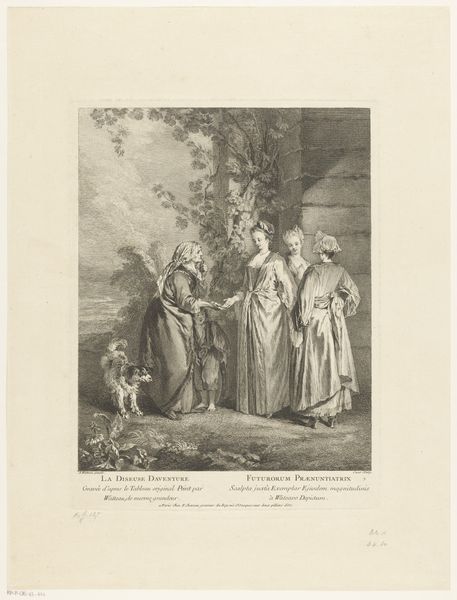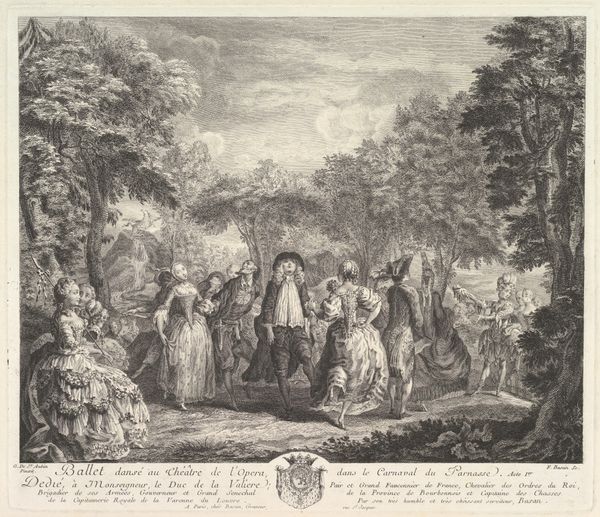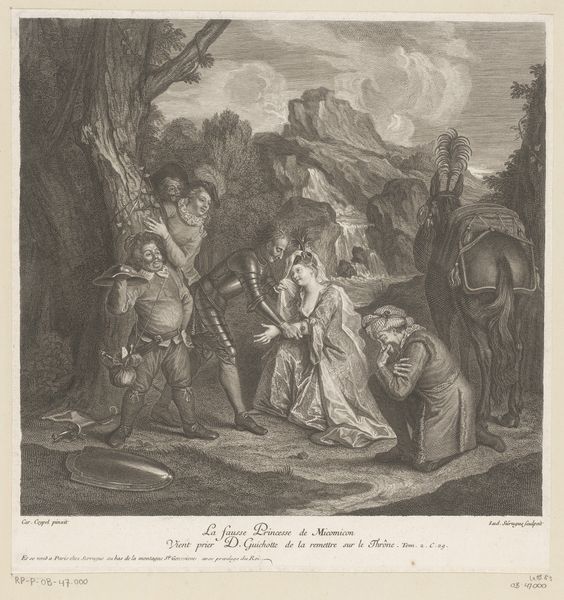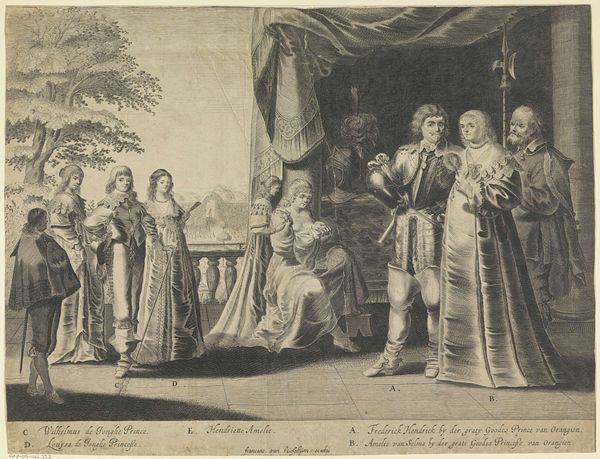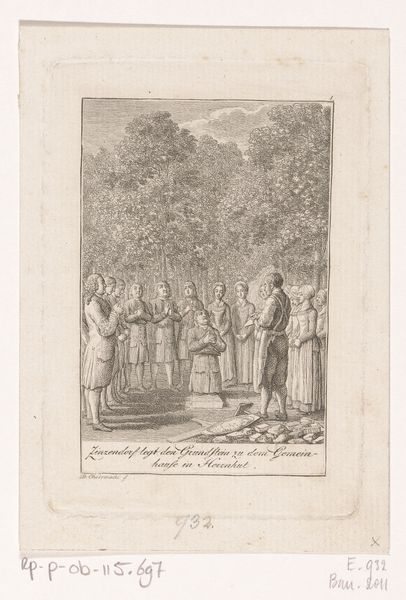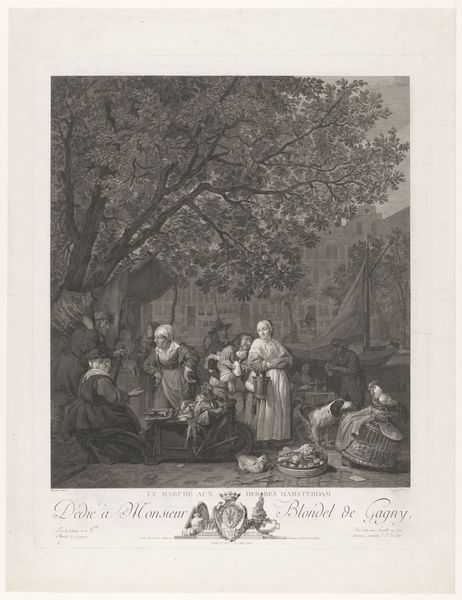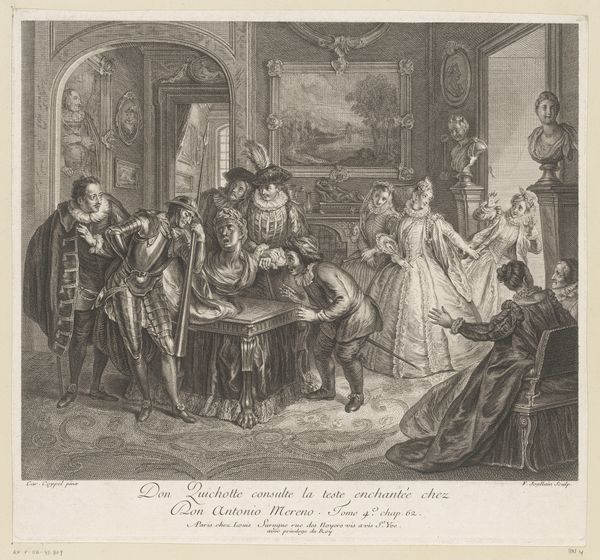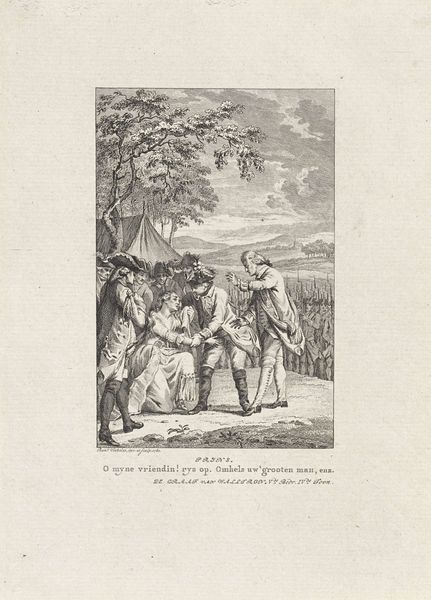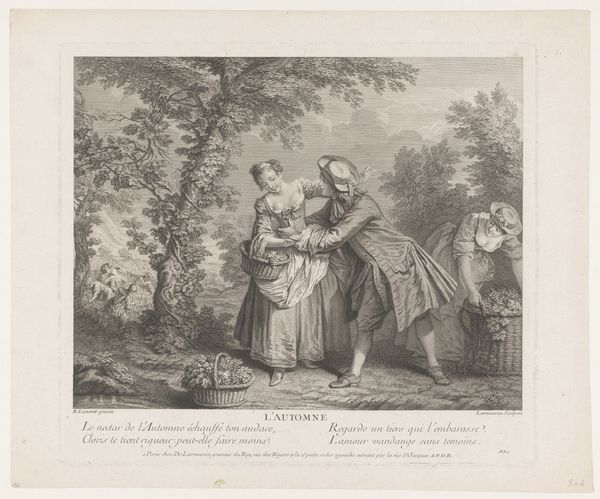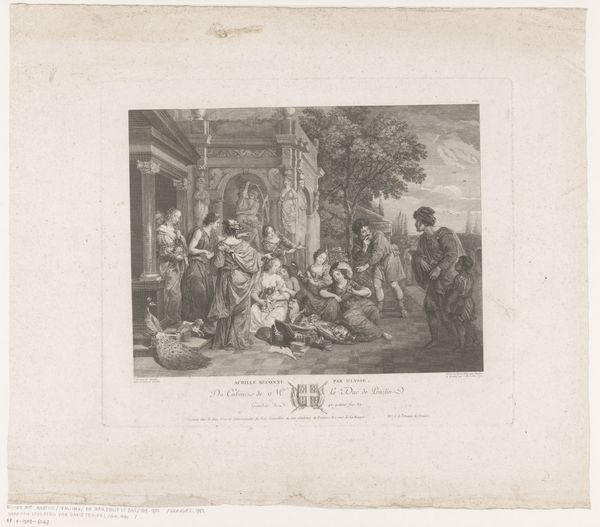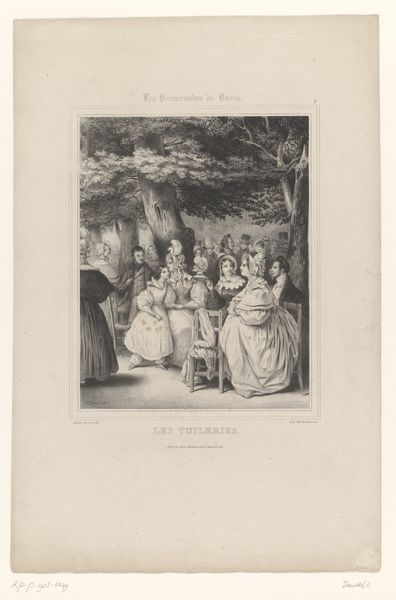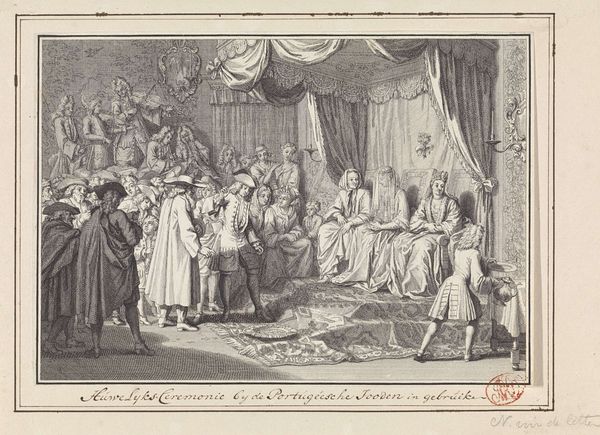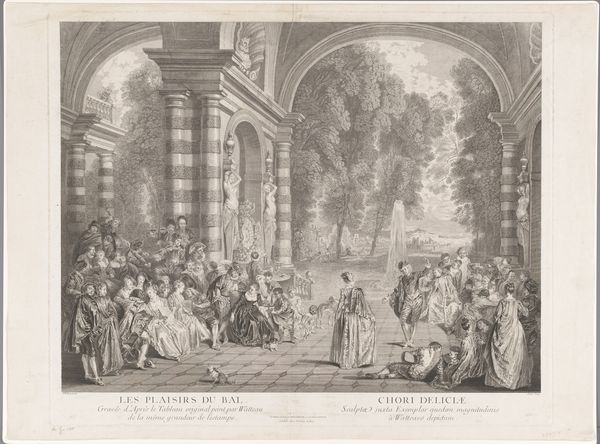
engraving
#
narrative-art
#
baroque
#
old engraving style
#
genre-painting
#
history-painting
#
engraving
Dimensions: height 315 mm, width 305 mm
Copyright: Rijks Museum: Open Domain
Curator: Let's turn our attention to this engraving, “Doloride vraagt Don Quichot voor haar wraak te nemen,” which translates to "Doloride asks Don Quixote to avenge her," created by Louis Surugue in 1724. It's currently held at the Rijksmuseum. Editor: The crispness of the lines! There is almost a photographic quality, yet it’s also deeply theatrical. Is that a woman weeping prominently? What is this dramatic scene about? Curator: It depicts a scene from Cervantes' Don Quixote, specifically the episode where the distressed Dolorida implores Don Quixote for help. This image gives a sense of how stories were visually circulated in the 18th century through reproducible means like engravings. These images helped form a collective imagination around literature and historical narratives. Editor: Notice the material density evoked despite the flatness of the engraving. The fabrics appear weighty, with a clear interest in how the light renders each pleat and fold of the robes and dresses. How meticulously were these details worked, and how long did it take to make? Curator: Engravings like this demanded skilled artisanship; a metal plate carefully inscribed by hand. These types of images disseminated information but also established social hierarchies. Who could afford prints, and what stories were deemed worthy of reproduction and circulation? Editor: And that points us to consider the circulation of printed materials: its networks, who had access to them, how that might influence modes of production. The layering of clothing alone suggests access to specific means of production, markets, trade routes… It is incredible. Curator: Absolutely, it serves as a reminder that art and literature have always been enmeshed in socio-political landscapes. Examining images like this gives us insight into how cultural values were spread. Editor: Looking closer, this work certainly complicates conventional divides. The labor required to produce this "fine art" seems very… tactile, hand-driven. A beautiful intersection of "high" art and labor. Thank you. Curator: Indeed. It's images like this one that allow us to peel back the layers of history.
Comments
No comments
Be the first to comment and join the conversation on the ultimate creative platform.
